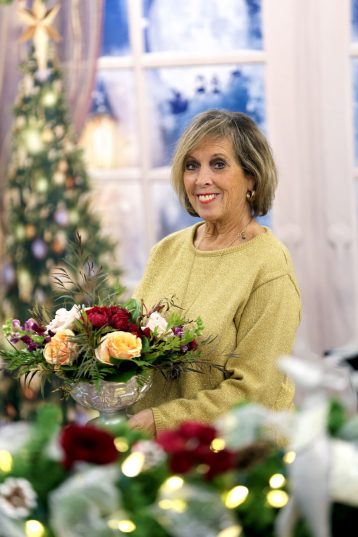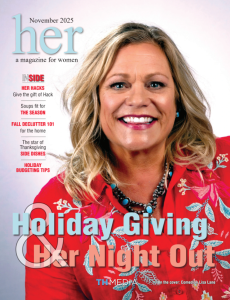I’ve written a lot here in the past about not only about food, but the ways food fits into our society and plays a role in our lives.
I am a deep believer in this aspect of food: How slowing down, taking the time to prepare and enjoy a meal together can truly enrich our lives.
One of the things that Mike and I do at dinner parties is throw out a question for everyone to go around the table and answer — most memorable birthday, first crush are a couple of fun ones. But my very favorite question to ask is “What was your most memorable meal?”
I love to hear people’s answers and what stands out to them among the thousands of meals we’ve consumed throughout our lives.
I’ve had many memorable meals, but the one that stands out the most is a luncheon I had in Ravenna, Italy, in the mid-2000s, while I was on a business trip.
Bear with me for a sentence or two of background.
My first career was as a journalist. I worked for several different specialized trade magazines in the construction equipment industry. Excavators, cranes, skid steers and articulated dump trucks were my bailiwick for about 15 years. I traveled all over the world to conferences, manufacturing plants and job sites to observe, sometimes operate and write about construction equipment in action.
On one of those trips to Italy, I was invited, along with a handful of other journalists, to a lunch with the elderly owner of a construction equipment company. It was basically a public relations move by the company’s marketing department, and I was preparing myself to sit politely through a meal listening and filtering through the virtues of this company’s new tractor. But that is not what ended up happening at all.
Usually when companies did this sort of thing, they brought you to a really nice restaurant. Again, this is not what happened here. Instead, we pulled up to the wharf area of the city and walked into a tiny fish shack restaurant with about 10 small tables covered in vinyl tablecloths.
Inside where a few successful looking men in their 50s sitting at a long table — formed by pushing together three of those 10 small tables.
The menu was limited — whatever mama was cooking that day. The kitchen was tiny and visible from the dining room and was literally staffed by an older woman, slowly and methodically chopping, adding, tasting the food on the stove. No need to rush — we were all going to be here a while.
Come to find out, the men who had gathered and who slowly trickled in to fill the rest of the long table, had come to honor our elderly construction equipment manufacturer host. They had come to thank him and re-tell stories about how their parents bought tractors and construction machinery on credit from him when he owned a construction equipment dealership many years ago.
It was post World War II, everybody had lost everything in the war, and there was nothing to start with or start from and our elderly host took a chance on many families who had come to him for help and credit in the early 1950s.These men were children then but had gone on to live successful, prosperous lives in part to due this elderly gentleman.
The wine flowed, the stories went on and on and the group of successful, well-dressed, Italian businessmen even broke out into a song at one point. This was like no staid, contrived business lunch I’ve attended.
Funny enough, I barely remember the food. I know there was some kind of fish stew. I remember this because I am not all that fond of fish stew, but this was tomato-based, made fresh from that day’s catch and it was fabulous.
What sticks in my mind most is that this was so heartfelt and meaningful. There was a true recognition by these businessmen of the role our elderly host played in their lives. It was not some lifetime-achievement awards night with a tear-jerker video and a crystal trophy — this was the real deal. I really believe it would be hard to recreate this camaraderie and connection in any other type of setting other than a long, leisurely meal such as this.
And this type of eating — the long, meandering meals — is commonplace in Italy. I’ve had many meals like this. Including a solo meal on a Sunday afternoon in Sienna, where I was invited to join a family because they felt so sad for me that I was alone.
Italians eat in courses — anitpasti (before pasta); primi piatti (first plate) — and it is usually pasta or risotto — secondi piatti (second plate) is meat or fish, usually served with contorno (salad or vegetables); then fromaggi e frutta (fruit and cheese); and finally, dolce (dessert) and digestivo (grappa) and coffee. I know it sounds like a lot of food, but portions are small, sharing is encouraged, and you usually do not order every course.
Nevertheless, it is a dining experience that can take a while. And it is in those spaces in between when you are seated next to or across from someone that encourage conversation and connection.
I am planning a trip back to Italy by myself in September. I plan to travel around and eat and make connections with people in restaurants and farms and learn more intimately the Italian way of eating. It is something I feel so drawn to and something I feel we are missing here in our culture. I will be in the north, primarily around Bologna where tortellini and Bolognese sauce were born. Where Sangiovese grapes grow and the best prosciutto is raised and cured.
I am hoping to add a few more memorable meals to my dinner party arsenal.
Leslie Shalabi is co-founder of Convivium Urban Farmstead, a Dubuque-based nonprofit organization based on the idea of creating community around food. A lifelong lover of food and entertaining, she is dedicated to helping people find ways to connect through the universal languages of food and hospitality.










